The seventh incarnation of the BMW 7 Series, set to go on sale in November, has been comprehensively re-engineered as part of efforts to position it more upmarket than it has ever been. It is now significantly larger, more luxurious and more spacious than at any time in its 45-year history - and is now available with a fully electric powertrain.
To give it the visual impact to go with its elevated positioning, BMW has provided its Mercedes S-Class rival with a bold new exterior design. The new look, driven largely by customer feedback in markets such as China and the US, instantly differentiates the new 7 Series from the sixth-generation model, launched in 2015.
“We wanted to give the new model a more striking appearance,” said Robert Kahlenberg, the 7 Series project director. “Customers in our largest markets are generally younger and demand a more contemporary look than perhaps what we’re used to in Europe, where the average age of buyers is higher.”
Up front, the large grille, consisting of two elements as on all recent BMW models, is even larger than before and comes with BMW’s ‘Iconic Lighting’ treatment, as first brought to the facelifted BMW 8 Series. The separation of the headlamps, with the LED running lights positioned above and the main beams in a separate recess below, add greater presence while providing close visual ties with the recently facelifted BMW X7 – part of a concerted effort by BMW to more obviously link its two luxury cars.

A three-box silhouette with familiar long-bonnet proportions characterises the overall shape, which features smooth and largely unadorned surfaces throughout. Only two feature lines are evident along the flanks, which have a pronounced shoulder running from the outer tip of the running lights through to the tail-lights. As on the BMW iX, door handles with an internal touchpad and electronic mechanism replace traditional handles.

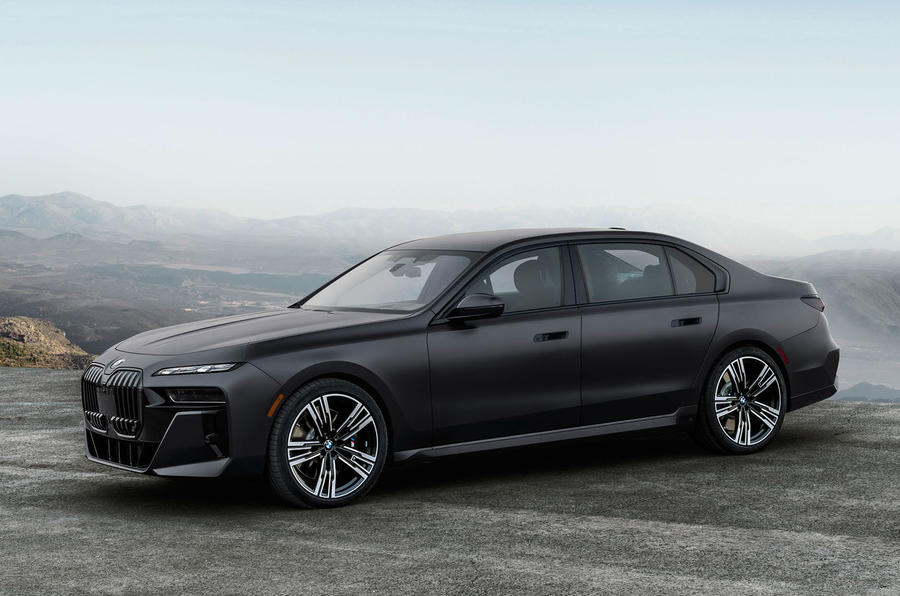
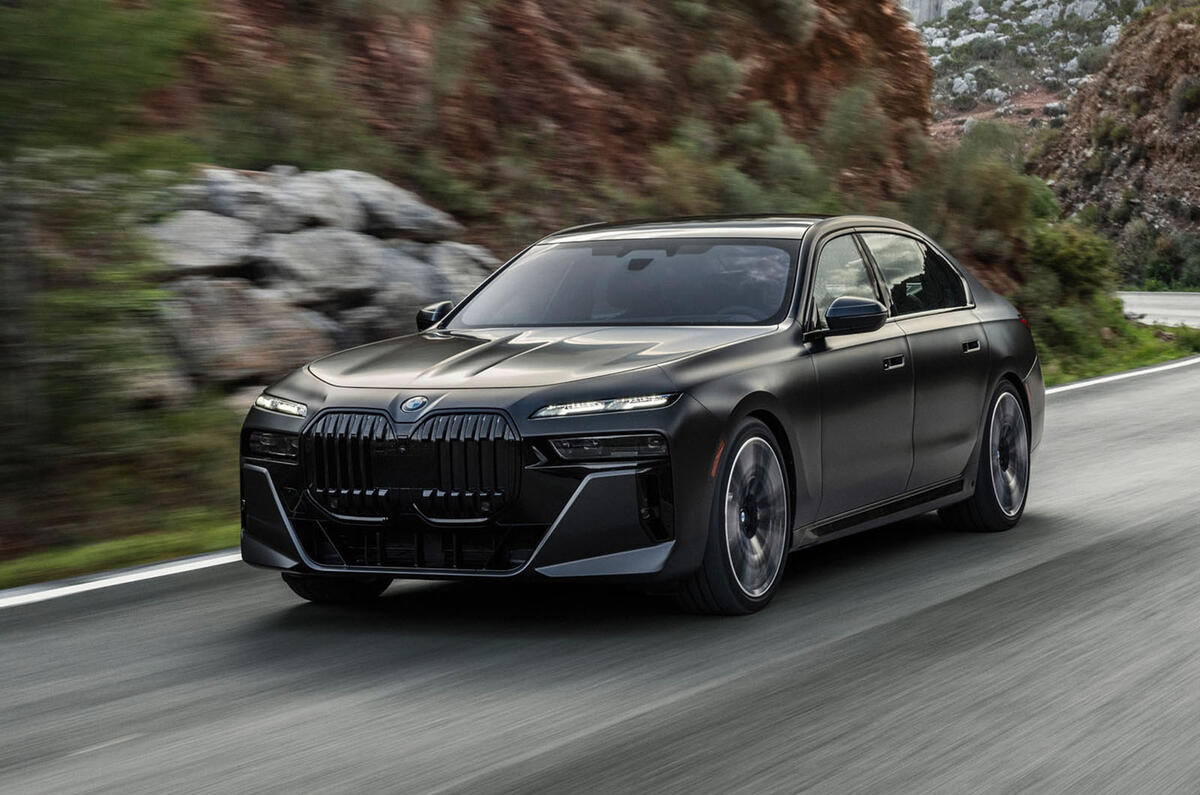








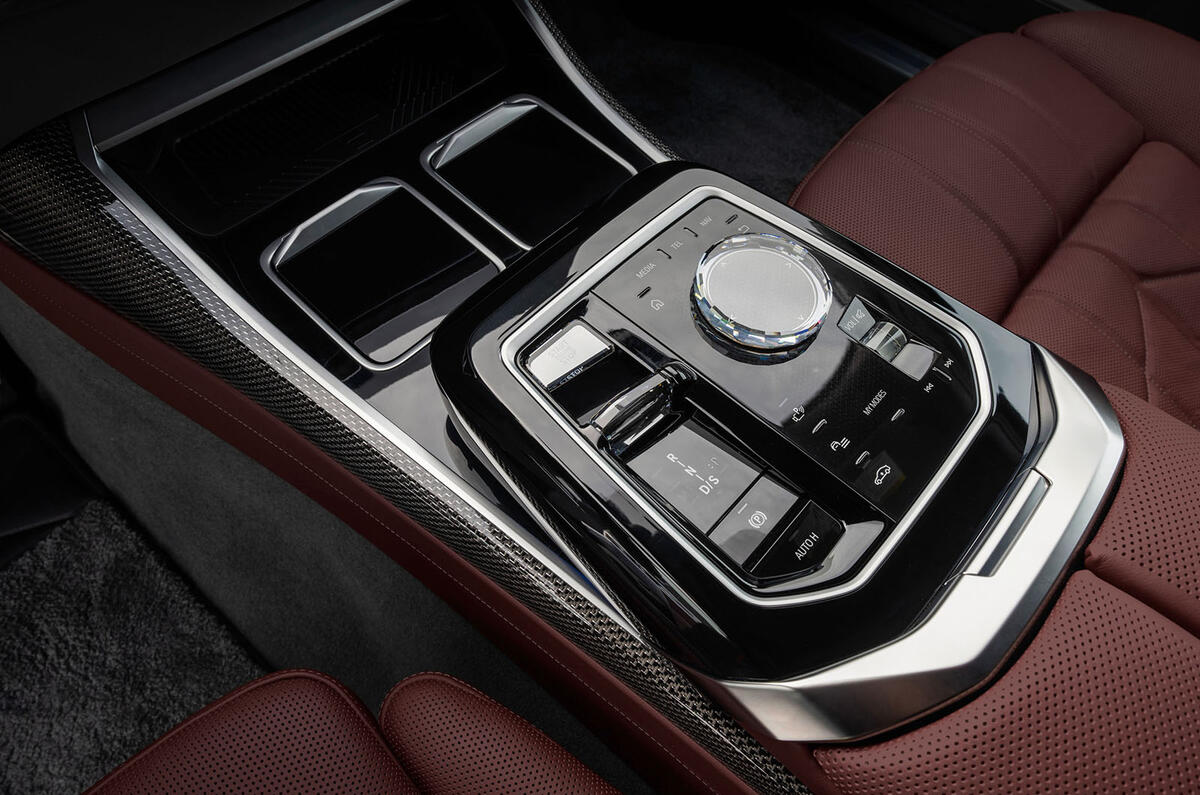




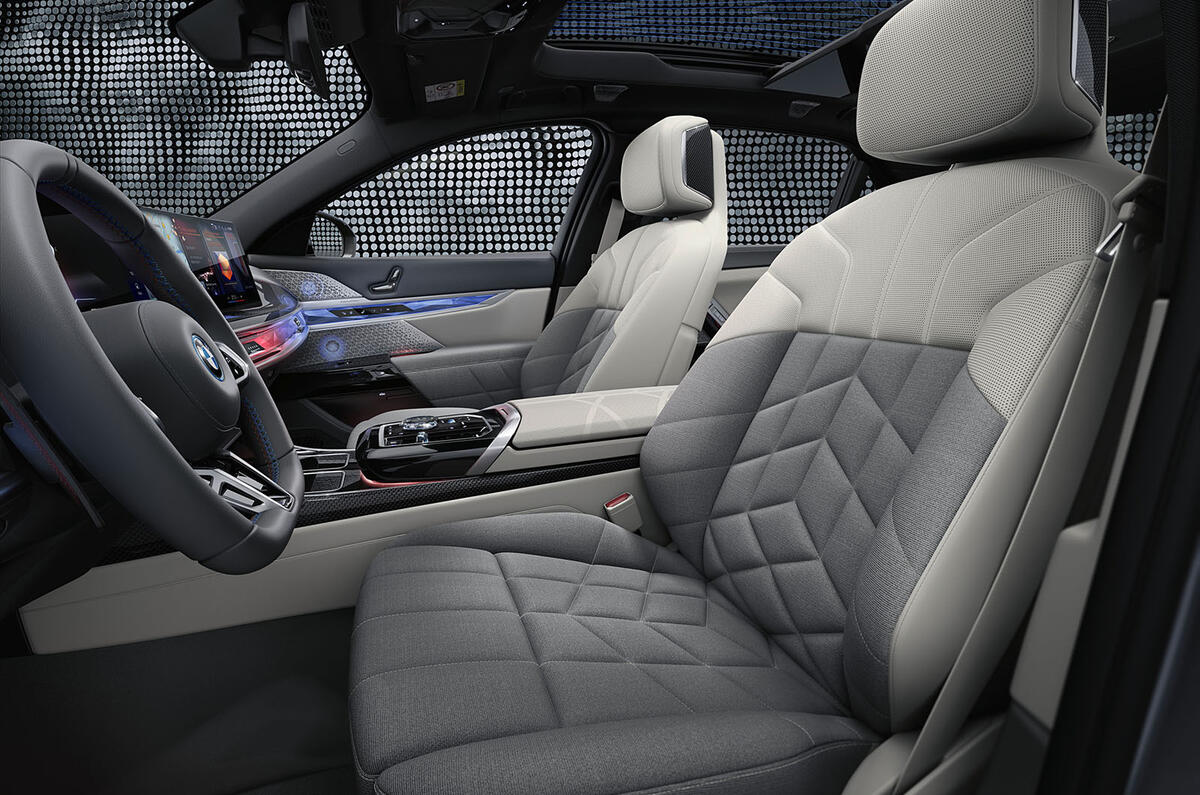

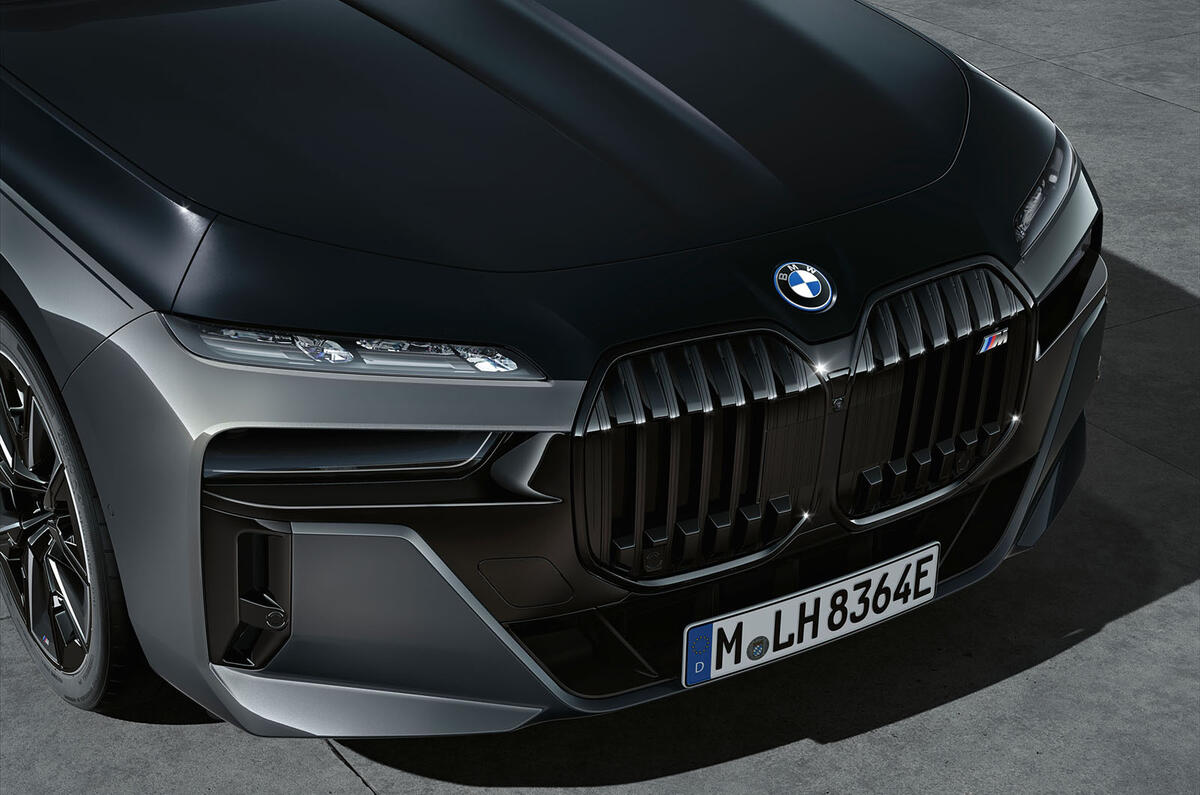

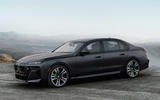




















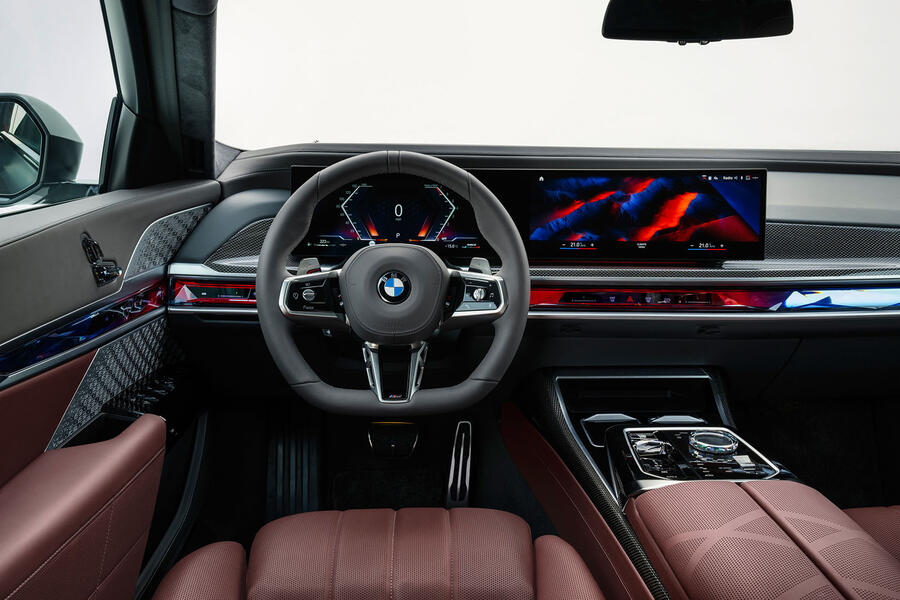


Join the debate
Add your comment
O-M-G. Simply awful. The failed Jeep Cherokee dumped the double-headlight scheme 4 years ago. Very sad to see the inept BMW designers chose to pick it up for their flagshit sedan. This is what you get when focus groups are left to design cars. Pitiful.
O-M-G. Simply awful. The failed Jeep Cherokee dumped the double-headlight scheme 4 years ago. Very sad to see the inept BMW designers chose to pick it up for their flagshit sedan. This is what you get when focus groups are left to design cars. Pitiful.
BMW grills used to be nice but now they are just hideous. I blame Audi. They started it.
Mercedes, Volvo and Lexus on the other hand over the last two decades there cars and front grills have just got better looking.